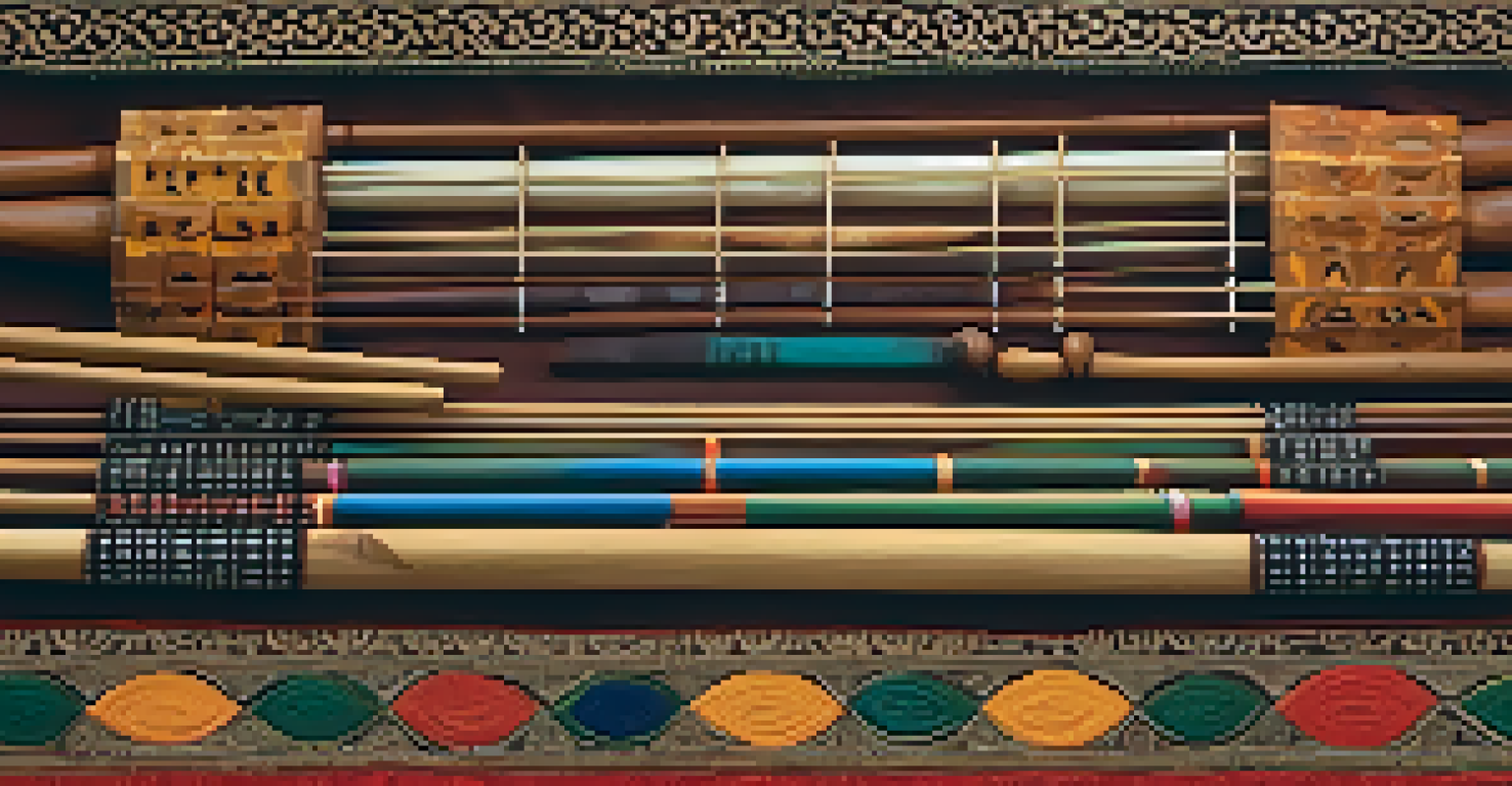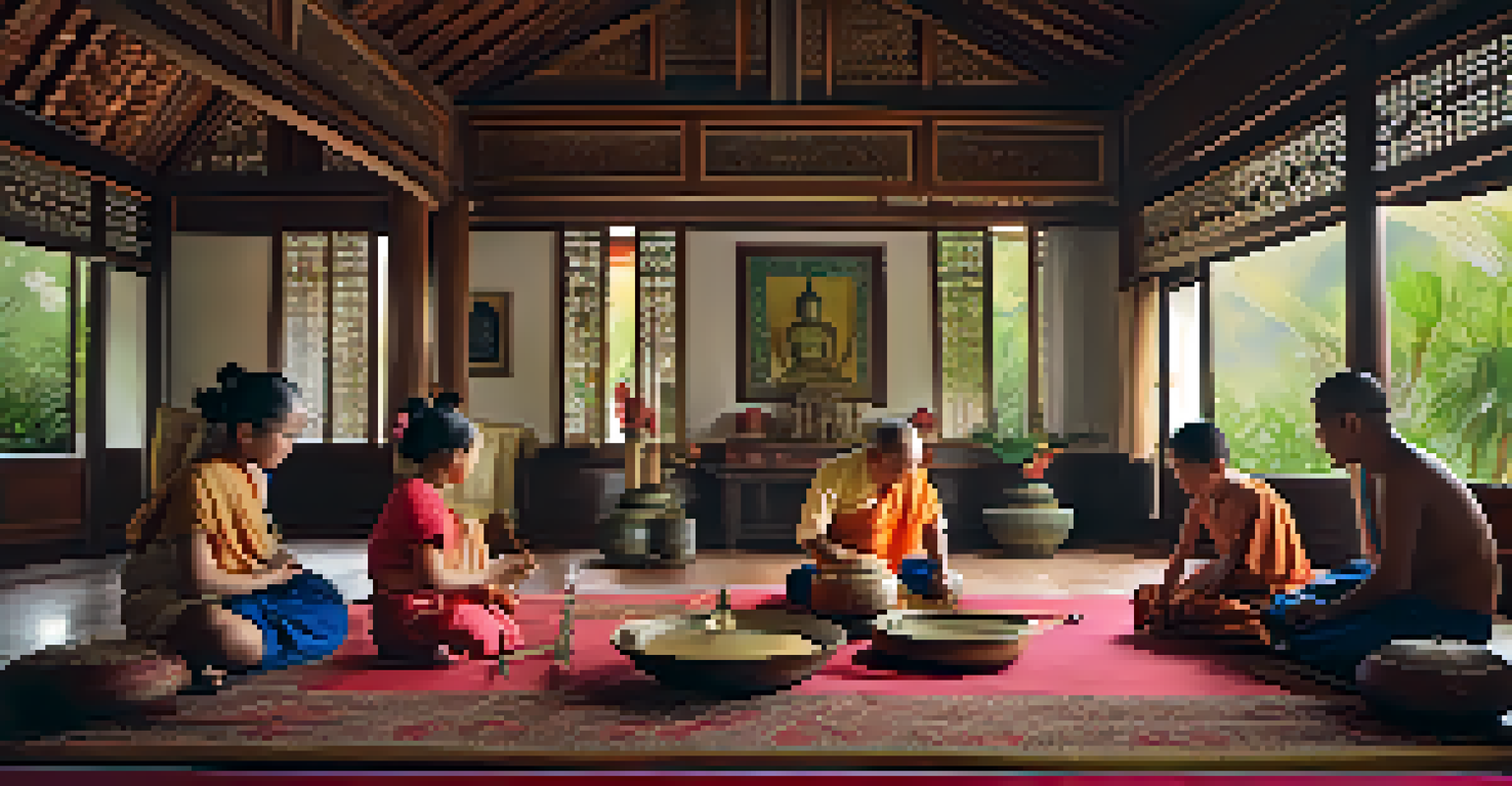The Role of Traditional Thai Music in Cultural Celebrations

Understanding Traditional Thai Music and Its Roots
Traditional Thai music is deeply intertwined with the country's history and culture. It reflects the diverse influences that have shaped Thai society over centuries, from the ancient kingdoms to modern times. Instruments like the ranat (a type of xylophone) and the pi (a reed instrument) play pivotal roles in this musical landscape.
Music is the shorthand of emotion.
The origins of Thai music can be traced back to the Sukhothai period, where it served not just as entertainment but as a reflection of the spiritual and philosophical beliefs of the time. The melodies often embody the essence of Thai life, illustrating the stories of the people and their environment.
Understanding these roots allows us to appreciate how traditional Thai music has evolved while retaining its cultural significance, particularly in celebrations where it plays a central role.
The Role of Music in Thai Festivals and Ceremonies
Thai festivals are vibrant celebrations that showcase the rich tapestry of culture, and music is at the heart of these events. Whether it's the joyous sounds during Songkran (the Thai New Year) or the serene melodies accompanying religious ceremonies, music enhances the atmosphere and unites people.

For example, during Loy Krathong, the festival of lights, traditional music accompanies the release of floating lanterns, creating a mesmerizing experience that resonates with both locals and visitors. The rhythmic beats and soothing melodies evoke emotions that deepen the sense of community and shared joy.
Roots of Thai Music in Culture
Traditional Thai music reflects the country's history and diverse cultural influences, showcasing the spiritual and philosophical beliefs of its people.
Thus, music becomes a powerful tool in these celebrations, fostering connections among participants and creating lasting memories.
Instruments That Define Thai Musical Traditions
The unique sound of traditional Thai music is largely attributed to its distinct instruments. The khim (a hammered dulcimer) and the saw u (a two-stringed fiddle) are just a couple of examples that bring a rich texture to the musical experience. Each instrument contributes its flavor, enhancing the storytelling aspect of the music.
Without music, life would be a mistake.
These instruments are often handmade, reflecting the craftsmanship and dedication of their creators. The care that goes into making each piece adds a layer of authenticity, making the music not just sound good but also feel significant.
When played during cultural celebrations, these instruments create a captivating soundscape, transporting listeners to a place of tradition and heritage.
How Traditional Music Preserves Thai Heritage
In a rapidly changing world, traditional Thai music serves as a bridge between generations, preserving the nation's heritage. It carries stories of the past, teaching younger generations about their roots and cultural identity. This knowledge is often passed down through families, ensuring that the music remains alive.
For instance, local workshops and community gatherings often feature traditional music, fostering a sense of belonging and pride among participants. These gatherings not only celebrate the music itself but also reinforce the importance of cultural continuity.
Music's Role in Thai Celebrations
Music enhances the vibrant atmosphere of Thai festivals and ceremonies, fostering community connections and shared joy among participants.
By participating in these events, individuals strengthen their connection to their heritage, ensuring that traditional Thai music continues to thrive in modern society.
The Influence of Traditional Music on Modern Thai Culture
As Thailand embraces modernization, traditional music influences contemporary genres, creating a unique fusion that appeals to younger audiences. Artists often blend traditional elements with pop, rock, and other styles, making the music more accessible while honoring its roots.
This evolution showcases the adaptability of Thai music and its ability to resonate with new generations. For example, songs that incorporate traditional instruments and themes often gain popularity, sparking interest in the original forms of music.
Through this blending of old and new, traditional Thai music remains relevant, ensuring that its cultural significance endures in the face of change.
Celebrating Thai Music: Events and Competitions
Various events and competitions celebrate traditional Thai music, showcasing talent and preserving its legacy. Festivals like the Bangkok Traditional Music Festival invite musicians to perform, fostering appreciation for this cultural gem. These events also provide a platform for young artists to learn and grow.
Competitions often highlight the intricate skills involved in playing traditional instruments, encouraging participants to master their craft. This competitive spirit not only promotes excellence but also fosters camaraderie among musicians.
Preserving Heritage Through Music
Traditional Thai music serves as a bridge between generations, ensuring the preservation of cultural identity and heritage in a changing world.
By celebrating traditional music in this way, the community reinforces its importance and inspires future generations to carry on the tradition.
The Global Impact of Traditional Thai Music
Traditional Thai music has gained recognition beyond Thailand’s borders, influencing global musical landscapes. International collaborations and performances showcase the beauty of Thai melodies, introducing diverse audiences to its rich cultural heritage. This exposure helps bridge cultural gaps and promotes understanding.
Furthermore, music festivals around the world often feature traditional Thai performances, allowing artists to share their heritage on a global stage. Such events celebrate diversity and highlight the interconnectedness of cultures through music.

As Thai music reaches new ears, it cultivates appreciation for its history and significance, ensuring that its impact resonates widely.